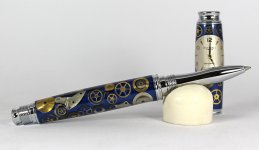It really depends what you intend to do in the future, but I'll give you my, somewhat limited, experiences - I'm sure others out there have far more experience than me.
I have both vacuum and pressure equipment. However, to date, I have not used the pressure pot, for a number of reasons - mainly that the air compressor was bought second hand and I'm not sure how well it has been maintained - although it looks new, I'm not sure I trust it not to have rusted spots or whatever in the tank (me being over cautious).
Anyway, I have cast polyester, polyurethane and epoxy, as well as stabilised wood.
Polyester doesn't require a pressure pot, or vacuuming. Just mix, pour and wait.
Polyurethane almost always needs something. I tend to vacuum the resin after I have mixed it, but before I've poured it. This generally gets rid of 99% of bubbles. I occasionally come across tiny bubbles remaining, but nothing major. If I'm mixing something like mica powder, which contains lots of air, then I'll generally mix that with one part of the resin, vacuum that, then mix the two parts of the resin together, and vacuum again. Some resins do have a very short open time, but I've found that I can vacuum a resin with a 2.5 minute open time, as long as I'm only doing a single colour pour (both colours can go into the vacuum chamber together so that isn't an issue, I just don't have the extra time available to mix a second colour). Some resins are thicker, and will require longer in the vacuum chamber, but I've found that these tend to have a slower setting time, so it hasn't been a problem.
Epoxy isn't generally supposed to need pressure or vacuum, as it generally sets slowly enough that bubbles will be released naturally. However, I have used a quicker setting epoxy (something like 15 minutes work time, rather than the usual several hours) which was full of bubbles. I treated that the same as I do polyurethane, and that got rid of almost all bubbles.
So, I get on fine just using vacuum....but I daresay it would be quicker and easier to just use a pressure pot. I guess my ideal would be to use a vacuum to get rid of any bubbles in the resins before they're mixed, when time isn't an issue - especially if I've mixed with any kind of mica powders. Then to use pressure one everything is mixed and poured. I would think that that would virtually guarantee castings free from even the tiniest bubbles.
Of course, if you intend to stabilise wood, then vacuum is the way to go. But then if you wanted to cast with wood, or anything else, you'd probably find that they introduced bubbles into your mix....so you'd want pressure.
As for price...I honestly can't see that you'd get anything suitable for either for £100. You're looking at several hundred pounds for either set up.




